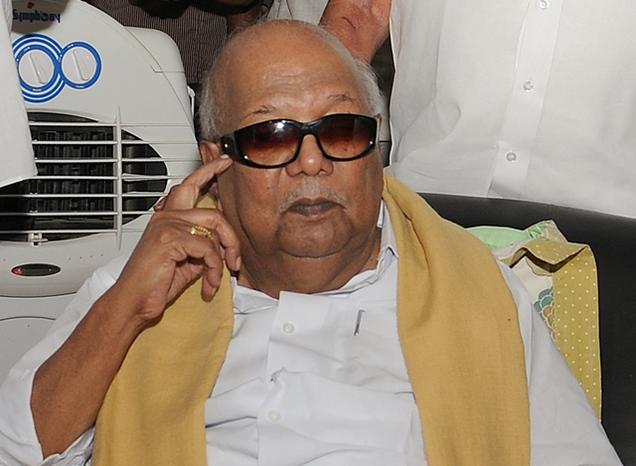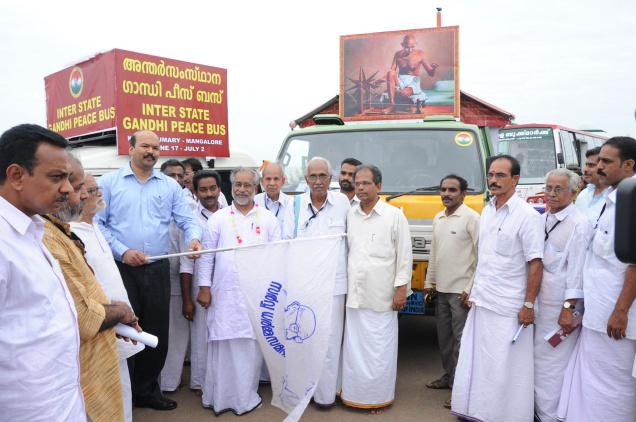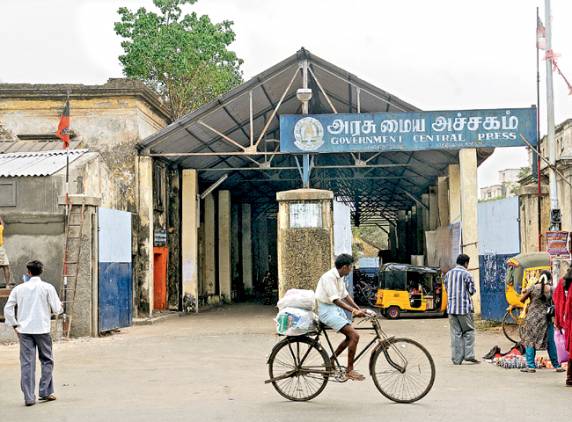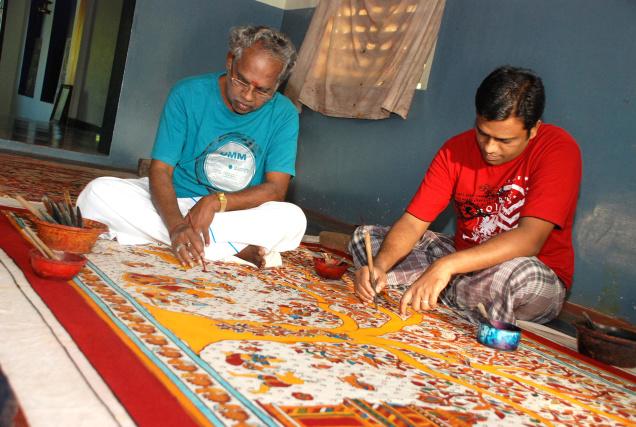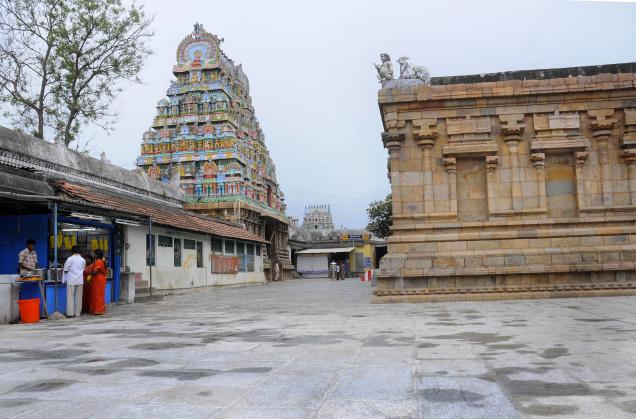“Chandragupta built an empire based on a strong central government and a large, powerful army. Ours is akin to it.”
That modern India has been inspired by the Mauryan concepts of statecraft and governance is one of the significant insights provided in “The Dancing Girl: A History of Early India,” by Balaji Sadasivan (1955-2010), a neurosurgeon and Singapore’s former Senior Minister of State for Foreign Affairs.
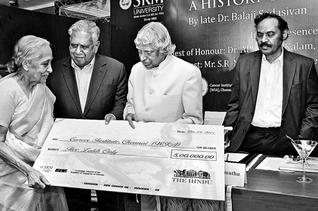
“The Dancing Girl: A History of Early India,” a book by Balaji Sadasivan, former Singapore Minister, was released at a function organised by The Hindu and SRM University in Chennai on Wednesday. On the occasion, the former President, A.P.J. Abdul Kalam, presents a cheque for Rs. 5 lakh to V. Shanta, Chairperson, Adyar Cancer Institute. The former Singapore President, S.R. Nathan (second from left), and SRM University Chancellor T.R. Pachamuthu are in the picture. In the second photograph Ma Swan Hoo, wife of Balaji Sadasivan, displays a copy of the book. At far right, is a section of the audience at the function. Photos S.R. Raghunathan
Capturing this facet of the author’s findings, the former President, A.P.J. Abdul Kalam, who launched the book at a function organised by The Hindu and SRM University here on Wednesday, said Chandragupta Maurya had built an empire based on a strong central government and a large, powerful army. “This model is virtually akin to the model being followed after our Independence.”
Another contribution of the Mauryas during the reign of Asoka, the former President noted, was the provision of moral and ethical dimension. “He defined that the primary purpose of the government was to provide peace, prosperity and welfare to all the citizens. The author rightly brings out that modern India looks to the Mauryan Empire for inspiration and has taken Mauryan Lion as the state emblem.”
Attributing the attainment of Independence to the phase of the freedom struggle which was led by Mahatma Gandhi, Mr. Kalam said people had to cherish and nurture Independence with the ethics and value system of the era of Chandragupta Maurya.
Quoting the author, Mr. Kalam said the Bhakti movement in India developed from Tamil-speaking south to Sanskrit-speaking north. The spiritual development of Hinduism was based on devotional songs, expressing ecstatic love for God. The compositions were mainly in Tamil, though the numbers of popular hymns were in Sanskrit. The Bhakti movement, encompassing Saivites and Vaishnavites, made Hinduism accessible to Indians of all States in both Sanskrit and regional languages, the former President pointed out.
S.R. Nathan, former President of Singapore, who presented copies of the book to donors, said it was labour of love written by an author who was captivated by the history of his ancestral homeland.
Pointing out that the rise of South Asia, like East Asia, was a civilisational one — though attention has been focussed on the economic potential — and the history of civilisations provided profound insights into their contemporary standing and the possible road ahead, Mr. Nathan said that from this perspective, the book offers much not only for the Diaspora but also for those who are in India itself.
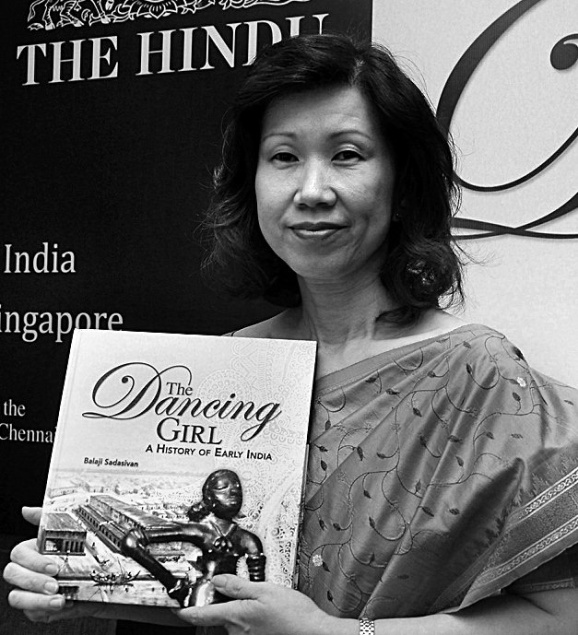
Ma
Ma Swan Hoo, wife of Balaji Sadasivan, who accompanied him on numerous visits to historic sites across India, provided the rationale for naming the book ‘The Dancing Girl’, which refers to a bronze statuette excavated from Mohenjodaro and a showpiece in the National Museum in Delhi. This 10.8-cm statue, a symbol of an advanced civilisation that existed about 4,500 years ago, was important to the history of India, she said.
Balaji Sadasivan, whose roots were in Arcot of Tamil Nadu, was a great lover of the history and civilisation of many countries. He chose to write on the history of India, a country he was so much in love with. He had originally planned to cover the history from ancient times to the present period over five volumes. This book is a combination of the first two volumes of 30 chapters and covers the ancient period up to the start of the decline of the Mughal reign in the 17 {+t} {+h} century.
Addressing the gathering, N. Ram, Editor-in-Chief of The Hindu , praised Balaji Sadasivan’s approach to history, and said the author regarded himself as an amateur but he was a gifted amateur. He instinctively realised that history was not an “unending catalogue of dull facts.”
By reading “The Dancing Girl,” one could learn a good deal about the mind and interests of the neurosurgeon and professional politician-turned historian. “He selects; draws out facts of significance, ignoring the dross and the trivial, and invests them with meaning. He provides interpretation. All interpretation is disputable but the historian must venture out to recreate, even trans-create, the historical picture. This is what this gifted amateur does in an engaging, accessible, enjoyable manner,” Mr. Ram added.
He appealed to Mr. Kalam to provide a push and use his moral influence for the Nalanda University revival project as there were reports of slow release of funds by the Union government to the project although the Bihar government had been very supportive.
Dr. V. Shanta, Chairperson, Adyar Cancer Institute, received a cheque for Rs. 5 lakh for the Institute from Mr. Kalam and Mr. Nathan. K. Kesavapany, Singapore’s Ambassador to Jordan and Director, Institute of Southeast Asian Studies, and T. R. Pachamuthu, SRM University Chancellor, spoke.
source: http://www.TheHindu.com / National / by Special Correspondent / Chennai, December 15th, 2011
